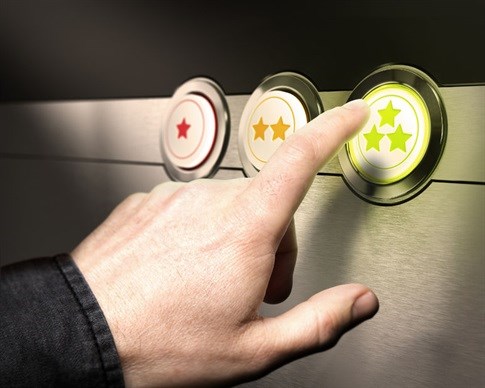





Following a breakfast break at the Principa-hosted presentation by Forrester Research on Friday, 20 February, Julian Diaz, head of marketing for Principa, introduced Dibeehi, author of Achieving Customer Experience Excellence and Customer Experience Future Trends and Insights.
Dibeehi joked that he stands in as a Barack Obama look-alike in his spare time, and spoke about why we need to focus on customer experience now. At its heart, he says we're talking about how to deal with people as a business discipline.

He quoted Clem Sunter, who said we're moving from the age of knowledge to the age of intelligence. The key differentiator is the way we use existing knowledge to create new knowledge and connect ideas and connect the dots by dreaming up ideas that have not been dreamt up before, explained Dibeehi.
Thanks to technology, empowered customers have given rise to a new era, from the age of manufacturing in the 1900s to the era of distribution in the 1960s, the era of information in the 1990s and now the era of customers, which we've been in since roughly 2010.
But that doesn't mean the previous focus falls away - we have to be open to understand what our customers expect and why they do what they do, while still focusing on improving manufacture, distribution and information, as customer expectations are at an all-time high.
Unfortunately, most of us don't yet know how to operate in this new era as it involves organisational change from the traditional inside out focus to one that works from the outside in.
Market imperatives include a mobile mindshift, meaning customers want immediate response and results, no matter where they are. Your company needs to become a digital disruptor as technology is the main enabler, so focus on the customer because if you don't do it, your competitors will. This leads to the importance of turning big data into business insights and ultimately transforming customer experience from something that's blowing in the wind to something meaningful and definite.
It's all about how customers perceive their interactions with your organisation. This may seem simple but there's a twist to it as the perception goes beyond the actual customer experience. So even if you have a great interaction with a customer, if the customer walks away saying it wasn't great, "that's how it actually went down", cautions Dibeehi. Businesses operate on myths such as pricing, network coverage, speed of delivery, all of which they deem as driving the perceptions, while analytics show these are not the most important.
The whole point of customer service is loyalty, but someone can be your customer for 20 years and not be loyal - it's about more than just retention, it's also about enrichment, through getting the customer to buy additional products and services from you; as well as advocacy, meaning the customer is more likely to recommend you to others.
If you're merely focused on price, customer experience is generally not a business consideration. No business can be the best all the time, the point is to get customers to still cheer for us when we're not at our best.
If loyalty is the currency of customer experience, what exactly creates that bond? Studies show that people remember how you made them feel, so it really is about the memory you create.
Why do satisfied customers defect, then? It could be that your business creates satisfaction but not complete satisfaction. Forrester Research has found that three most important dimensions are effectiveness, meaning the customer gets the value they're looking for; ease, meaning the customer gets value with minimal effort; and emotion, meaning the customer feels engaged in the overall experience. It's the last point that needs the most attention as it has actual financial payoff.

So while a scorecard is important, you need to look at why your business is getting the points you're getting. The individual attributes will differ across different businesses.
If you're not sure which experiences to measure where, start at the customer. Find out how they feel about your business based on each specific interaction. The move from 'inside out' to 'outside in' involves a shift in focus from company perceptions to moments that matter and add value to customer perceptions.
In a B2C world, we want the customer to pay us, but for B2B it's about promoting certain customer behaviours, like getting them to sign a contract - it's about process over experience. Think about it as a consumer - you go into a store to buy a newspaper and that's what you walk out with, day after day. So the actual business process will be the same, but the overall experience differs each time, coloured by the environment, temperature, attitude of the store assistant and other external pressures we face. The only thing that's actually changed is the perception of the experience. You can design emotional engagement into what you're doing by factoring in elements such as customer safety and comfort.
Dibeehi recommended journey mapping as it offers more visibility into the discrepancy of what the customer actually sees and what goes on behind the scenes of their experience. This helps your business to understand a problem from the consumer's point of view.
Without taking a blind leap of a faith, ask what your target customers expect, then ask about the actual experience those target customers walk away with, and lastly see if there's a gap between those and the experience you actually want to deliver. Most companies can't actually answer these questions, but it's all about managing the gap.
Managing the gap boils down to differentiating your business, focusing on strategy, gaining customer understanding, measurement to know your success indicators, governance - which can be focused on structure and design but is more about behaviour - and your business culture.
Lots to factor in, to improve that overall customer experience...
